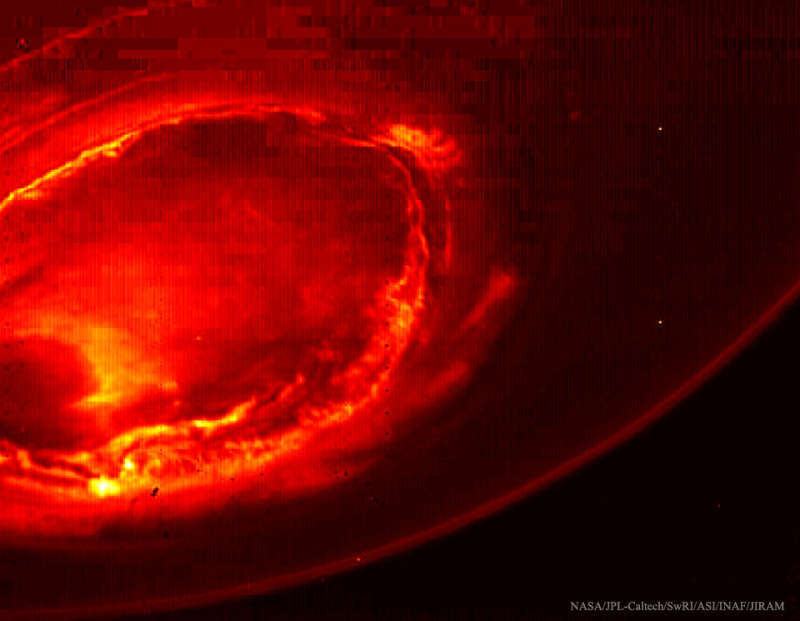
|
Explanation: Why is there a glowing oval over Jupiter's South Pole? Aurora. Near the closest part of its first pass near Jupiter in August, NASA's robotic spacecraft Juno captured this dramatic infrared image of a bright auroral ring. Auroras are caused by high energy particles from the Sun interacting with a planet's magnetic field, and ovals around magnetic poles are common. Data from Juno are giving preliminary indications that Jupiter's magnetic field and aurorae are unexpectedly powerful and complex. Unfortunately, a computer glitch caused Juno to go into safe mode during its last pass near the Jovian giant in September. That glitch has now been resolved, making Juno ready for its next pass over Jupiter's cloud tops this coming Sunday.
|
January February March April May June July August September October November December |
| ||||||||||||||||||||||||||||||||||||||||||||||||
NASA Web Site Statements, Warnings, and Disclaimers
NASA Official: Jay Norris. Specific rights apply.
A service of: LHEA at NASA / GSFC
& Michigan Tech. U.
Based on Astronomy Picture
Of the Day
Publications with keywords: aurora - Jupiter
Publications with words: aurora - Jupiter
See also:
- APOD: 2025 May 25 Á Beneath Jupiter
- Painting with Jupiter
- APOD: 2025 April 2 Á Jupiter and Ring in Infrared from Webb
- APOD: 2025 March 9 Á Cyclones at Jupiters North Pole
- APOD: 2025 February 16 Á Perijove 11: Passing Jupiter
- APOD: 2025 January 7 Á A New Years Aurora and SAR Arc
- APOD: 2024 December 8 Á Aurora around Saturns North Pole
